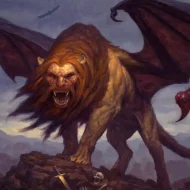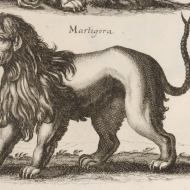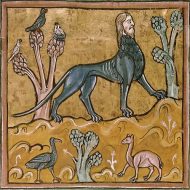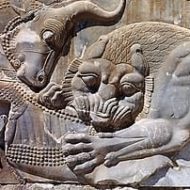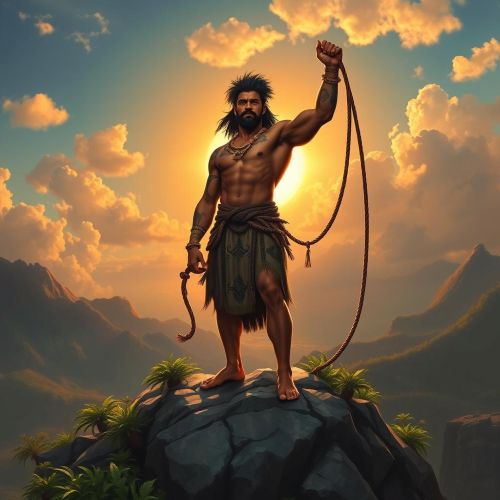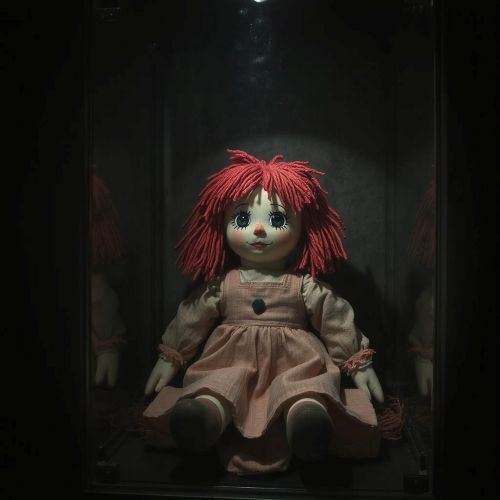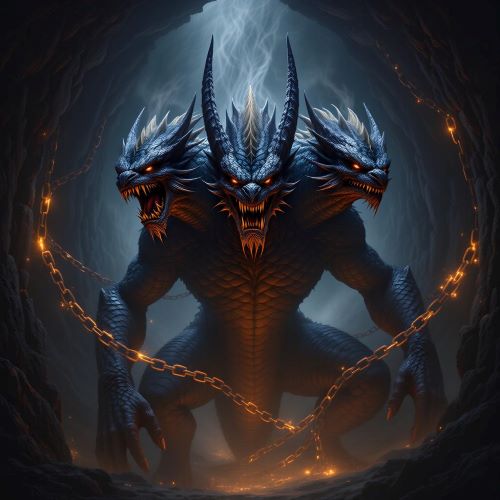Manticore : The Deadly Predator
Listen
At a glance
| Description | |
|---|---|
| Origin | Iranian Mythology . |
| Classification | Hybrids . |
| Family Members | N/A . |
| Region | Iran |
| Associated With | Evil, Maneater |
Manticore
Introduction
The manticore, which literally means “man-eater,” is a fearsome hybrid creature that can be found in both medieval and classical literature. It features a lion’s body, a man’s head, and a tail that can shoot poisonous dart.
The manticore is regarded as one of the most fearsome creatures depicted in bestiaries. Its origins can be traced back to Persia and India. It is commonly mentioned by Ctesias, Pliny the Elder, and Pausanias. The myth of the manticore first emerged during the 5th century BCE.
It is believed that it came from Persia and India. Some sources claim that it originated in Persia, while others claim that it came from India. According to Aelian, Ctesias claimed to have seen a creature that was given to the Persian king as a gift. According to other writers, the manticore was originally from India. It is also believed that Ctesias first saw it in Persia. This is because, in Indian mythology, the creature was regarded as a mythological creature.
Physical Traits
The manticore is about the size of a lion and has a face that resembles that of a man. It also has three rows of teeth and light-blue eyes. Its tail is similar to that of a land scorpion, and it contains a sting that’s more than a cubit long. The manticore has various types of stinging insects on its body, including a venomous Scorpion tail that inflicts a fatal wound whenever it gets attacked. If it gets attacked from a long way away, it will set up its tail in front and release its stings as if it were a bow. If it gets attacked from behind, it will straighten its body and release its stings in a direct line.
The wound inflicted by the manticore on an animal, aside from elephants, is fatal. Its venomous stings are as thick as a small rush and are about as long as a foot long. The animal is referred to as the Martikhora in Greek Anthropophagos because it doesn’t hesitate to eat humans even though it’s preying on other animals. According to Ktesias, the manticore can grow back after being released due to its fight with both its venomous and non-lethal enemies. In India, it is commonly hunted by local natives using spears and arrows.
Other Names
The Manticore is also called mantikhoras, mantichora, manticora, or mantiger
Powers and Abilities
The manticore is known to leave no prey behind. It can attack a person with its sharp claws or use its tail to shoot poisonous gases from its Scorpion tail. It can also bend back or stretch out after it releases the toxic substances. According to Aelian, the creature kills with the exception of elephants. The venomous manticore’s poisonous stingers are made of thick rope-like materials, and they can grow in their place once they have been discharged.
The manticores were known to kill one person to satisfy their appetites. They would then hunt multiple people at the same time. Its preferred method of luring and killing its prey was by hiding its body in the long grass. The manticore’s ability to scare people was demonstrated by how it would attack and kill them even before they knew what was happening. This showed how clever and cunning it was. Although humans were known to be a manticore’s preferred prey, they also hunted other animals, such as lions.
Modern Day Influence
In modern fantasy books and games, the manticore is featured prominently. In the first edition of Magic: The Gathering, as well as in the 1974 book “Dungeons and Dragons,” the creature can be found. In Rick Riordon’s “Percy Jackson and the Olympians,” the main character, Dr. Thorn, can transform into a manticore using a deadly Scorpion tail.
In Salman Rushdie’s 1988 book The Satanic Verses, the animal featured prominently in the opening chapter. In the Harry Potter series, written by J. K. Rowling, the main characters encounter the creature in the book “Prisoner of Azkaban.” In “Harry Potter and the Goblet of Fire,” Hagrid creates a new hybrid creature by breeding a manticore with fire crabs.
Related Images
Frequently Asked Questions
How was the manticore killed?
The manticore can be killed by normal weapons if it can be caught. Unfortunately the manticore is a ferocious creature who cannot be captured easily.
What is the manticore's weakness?
The Manticore is unable to kill elephants and is considered to be its only weakness.
What is a manticore in Harry Porter?
The Manticore is one of the Wizarding World’s most dangerous creatures. It is a sentient beast, capable of intelligent speech in the Harry Porter books.
What does Manticore mean?
The manticore means man eater in ancient Persian language.
What is the myth of the manticore?
Manticore, also spelled mantichora, manticora, or mantiger, a legendary animal having the head of a man (often with horns), the body of a lion, and the tail of a dragon or scorpion.

